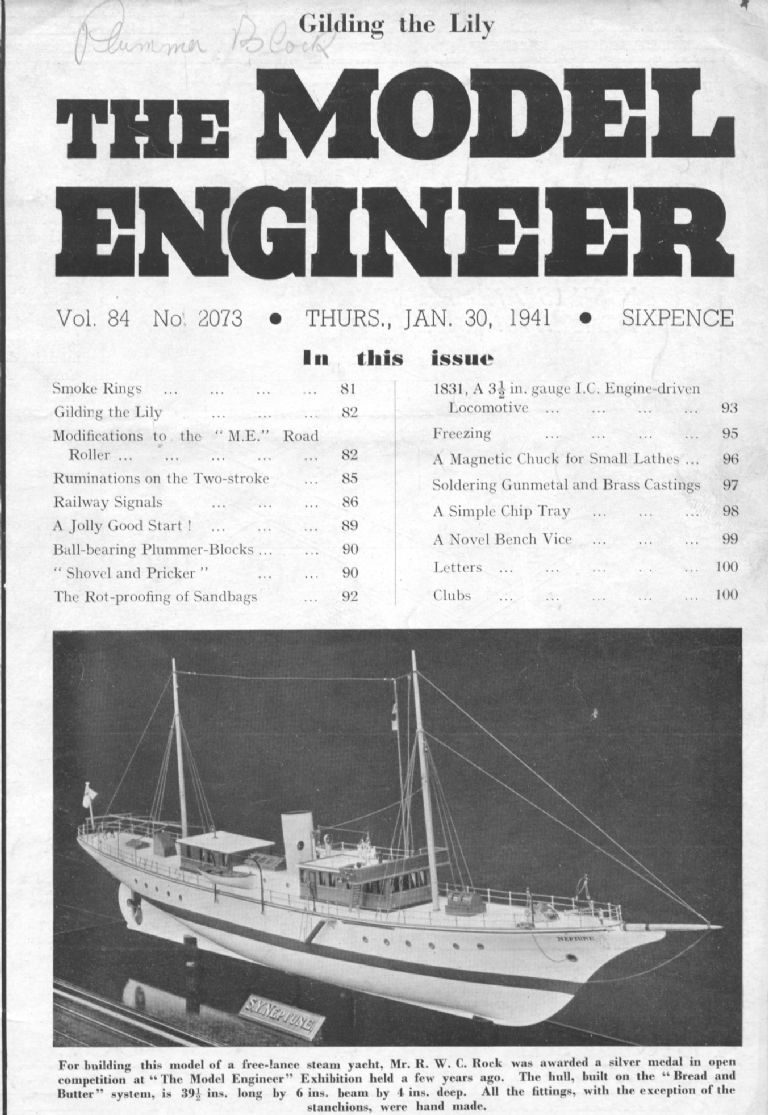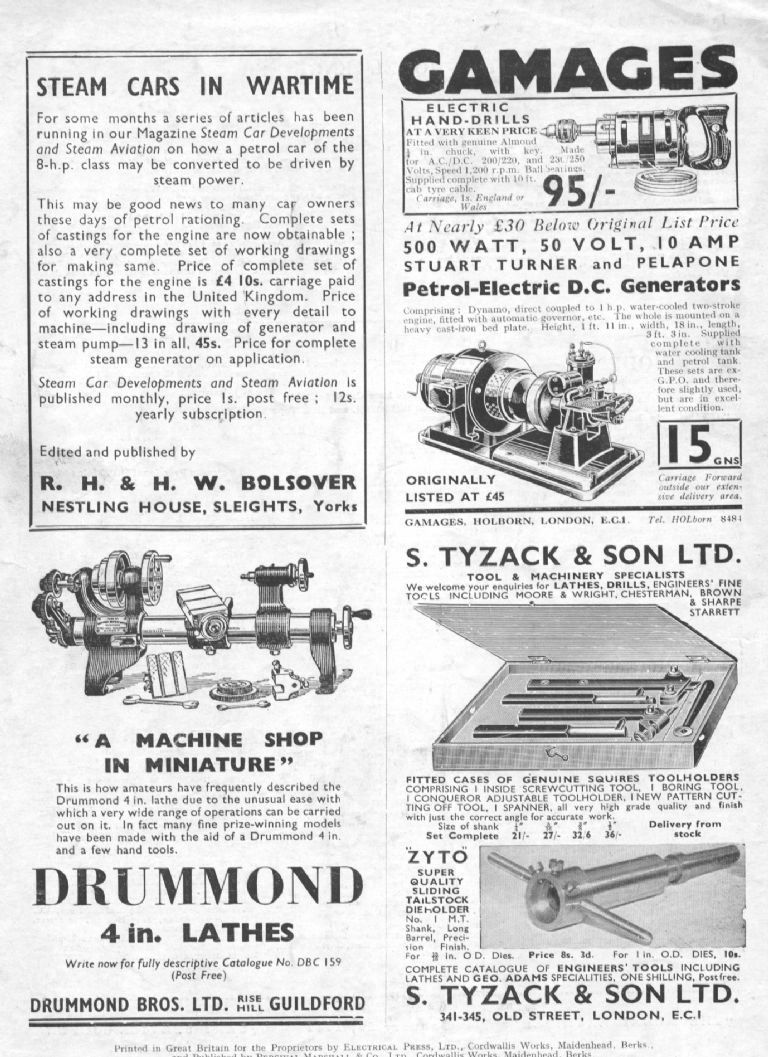Posted by Chris Gunn on 02/01/2019 20:03:55:
I remember reading in some old issues of the ME magazine that Model engineers were recruited to make parts of shell fuses during WW1.
Chris Gunn
Me too! May have been done on a large scale in WW1. I've got a WW2 magazine suggesting it should be done again but it doesn't seem to have been taken up. Most likely reason is the rapid changes in technique that occurred in the twenties and thirties.
During WW1 industrial lathe work was similar to what goes on in my workshop – simple lathes and parts made to low tolerances with lots of fitting. It's expensive and unreliable – in WW1 about 30% of British shells failed to explode because of badly made fuses.
By WW2 industry had upped their game considerably in terms of precision, quality management and mass-production methods leaving less opportunity for home workers.
'Our' kind of equipment produces first-class results in the right conditions. At its best for making prototypes and low-volume runs. Requires skilled operators. But it's not good at rapid production of interchangeable parts to tight tolerances using semi-skilled labour. Might be fun to get a few dozen members to make different loco parts from a plan and then get Jason to assemble them into a running engine. I think Jason would be doing a lot of remedial work!
Likewise, if 500 of us each turned a mild steel rod to 6.00mm diameter over a length of 25.00mm ±0.01mm, how many finished rods would meet the specification?
Dave
Georgineer.






